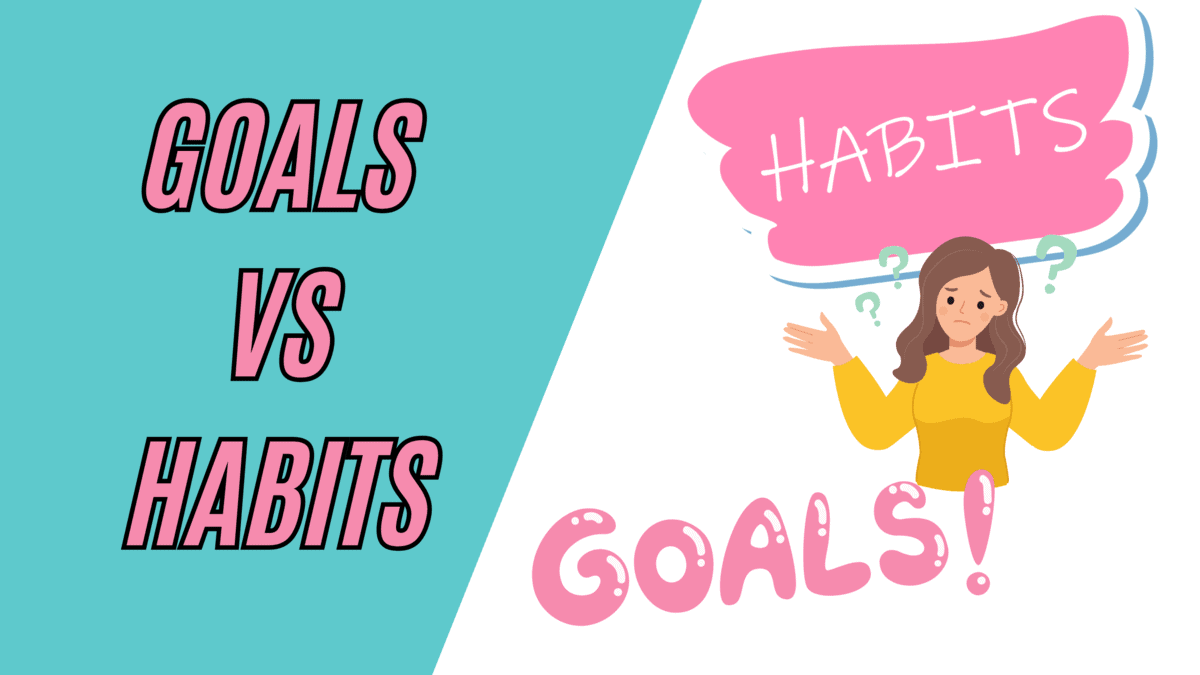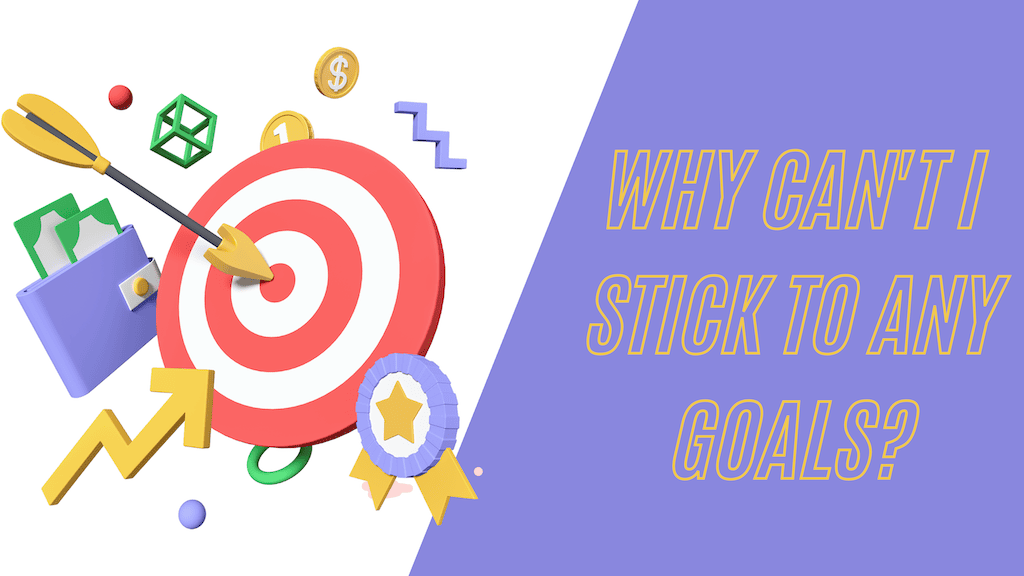Finding the balance between work and our personal lives is crucial for our well-being in today’s face paced world.
Time management plays a significant role in achieving this balance.
But, did you know that a staggering 82% of people lack a formal time management system?
We introduce to you, the Flowtime Technique – a simple yet effective approach that could revolutionize your productivity and work-life balance.
The Flowtime Technique is an alternative to the popular Pomodoro Technique, offering greater flexibility and a more natural approach to managing our time.
While both techniques focus on breaking work into manageable intervals, the Flowtime Technique emphasizes working in a state of “flow” and listening to your body’s natural rhythms and signals.
What Is the Flowtime Technique?
The Flowtime Technique has its origins in the innovative thinking of Zoe Read-Bivens. This time management approach is designed to help you take advantage of those periods when you’re fully immersed in a task and highly productive. During these times, your focus and engagement come effortlessly – a mental state commonly known as “flow.”
Flow occurs when there’s a balance between the level of challenge and your abilities, resulting in peak productivity.
Unlike some other time management techniques, the Flowtime Method places a strong emphasis on achieving and maintaining this flow state to maximize your productivity.
What Is the Pomodoro Technique and Why It Might Not Be Working for You
While the well-known Pomodoro Technique offers a structured approach to time management, it might not be the perfect fit for everyone.
The Pomodoro Technique, developed by Francesco Cirillo in the late 1980s, is a popular time management technique that involves breaking work into 25-minute intervals, known as “Pomodoros,” followed by a 5-minute break.
After completing four Pomodoros, you take a longer break of 15-30 minutes.
This technique has been widely embraced by writers, developers, and designers as a way to maintain focus and boost productivity. However, the Pomodoro Technique might not be a perfect fit for due to the following reasons:
Interruptions in Flow State
The strict time intervals can sometimes interrupt your flow state, especially if you’re deeply engaged in a task. Stopping work after 25 minutes might disrupt your concentration and make it difficult to pick up where you left off.
There’s nothing worse than being deep in a deep train of thought and then your alarm goes off to take a 5-minute break. It can be challenging to remember exactly where you were in thought when you return.
Rigidity of Time Intervals
The fixed time intervals may not suit every individual or type of work. Some tasks require more time and focus, while others can be completed within a shorter period. The Pomodoro Technique doesn’t account for these differences, which can lead to decreased productivity for certain types of work or people.
Insufficient Break Time
The 5-minute breaks might not be long enough for some individuals to relax and recharge, leading to mental fatigue and burnout over time.
If you find that the Pomodoro Technique isn’t meeting your needs, it’s time to consider exploring alternative time management methods, such as the Flowtime Technique.
By emphasizing a natural flow state and adapting to your personal rhythms, the Flowtime Technique can offer a more flexible and effective approach to productivity.
Pomodoro Technique vs Flowtime Technique
Time management is all about choosing the right technique that works best for you and your personal needs. Whether that’s when you’re most and least energized or the type of work that you do.
Let’s compare the Pomodoro Technique and the Flowtime Technique, discussing their features, best applications, and key similarities.
Key Features
The Pomodoro Technique is characterized by its strict time intervals, with 25 minutes of work followed by a 5-minute break. After four Pomodoros, an even longer break is taken.
The Flowtime Technique, on the other hand, emphasizes maintaining a flow state by adjusting the work and break durations based on your natural rhythm and the demands of the task at hand.
Best Applications for Each Technique
The Pomodoro Technique is well-suited for tasks that require short bursts of focused attention, such as writing, coding, or design work.
The Flowtime Technique is ideal for tasks that demand deep immersion and uninterrupted focus, allowing you to stay engaged in the task for longer periods without the risk of burnout.
Key Similarities
Despite their differences, both techniques share some key similarities:
- Precise time tracking: Both techniques encourage tracking your time to stay accountable and maintain productivity
- Eliminating multitasking: By promoting a dedicated focus on a single task, both techniques help to eliminate multitasking and its negative impact on productivity
- Facilitating breaks: Both methods recognize the importance of taking breaks to recharge and maintain mental energy
Ultimately, the choice between the Pomodoro Technique and the Flowtime Technique depends on your personal preferences, working style, and the nature of the tasks you’re tackling.
It’s crucial to experiment with different techniques and find the one that best supports your productivity and work-life balance.
Remember, there are other time management methods you can explore, such as the Eisenhower Matrix or the Pareto Principle, to find the perfect fit for your needs.
The Basics of the Flowtime Technique
The Flowtime Technique is a time management method designed to help you harness your natural productivity rhythms and maintain focus on a single task at a time.
Let’s dive into the essential steps of implementing this technique:
Step 1: Create a Timesheet
Start by setting up a timesheet to track your work sessions and breaks. This simple tool will help you keep track of your progress and identify patterns in your productivity.
Your timesheet doesn’t have to be too complicated, you can even do it with pen and paper if you want. Here’s an example:

Step 2: Choose a Task
Select a specific task to focus on during your work session. Be mindful of its complexity and the amount of time it may require. Writing down your goals is a powerful way to help you stay organized and motivated.
Step 3: Begin Working on the Task
Once you’ve chosen a task, begin working on it with complete focus. Eliminate distractions and create an environment conducive to deep work.
Step 4: Avoid Any Multitasking
As with other time management techniques like the Pomodoro Technique and timeboxing, the Flowtime Technique emphasizes the importance of concentrating on one task at a time.
Multitasking can lead to decreased productivity and mental fatigue, so avoid it at all costs.
Step 5: Work Until You Need a Break
Unlike the Pomodoro Technique, the Flowtime Technique doesn’t set rigid time intervals for work and breaks.
Instead, work on the task until you naturally feel the need for a break. Listen to your body and mind, and take a break when required. Remember to record the duration of your work session and break on your timesheet.
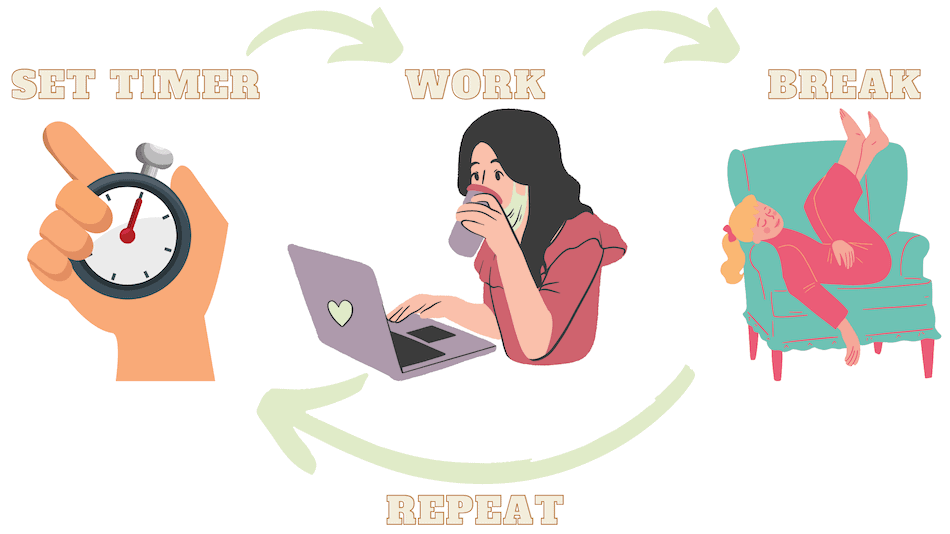
Making Use of Your Ultradian Rhythm
The Flowtime Technique aligns with the concept of the Ultradian Rhythm, which suggests that humans naturally experience cycles of high and low energy throughout the day – this is often referred to as your Biological Prime Time.
By following your body’s natural productivity rhythms, you can maximize your output and maintain a healthy work-life balance. Scheduling tasks for your high-energy times of day and breaks for low-energy times of the day.
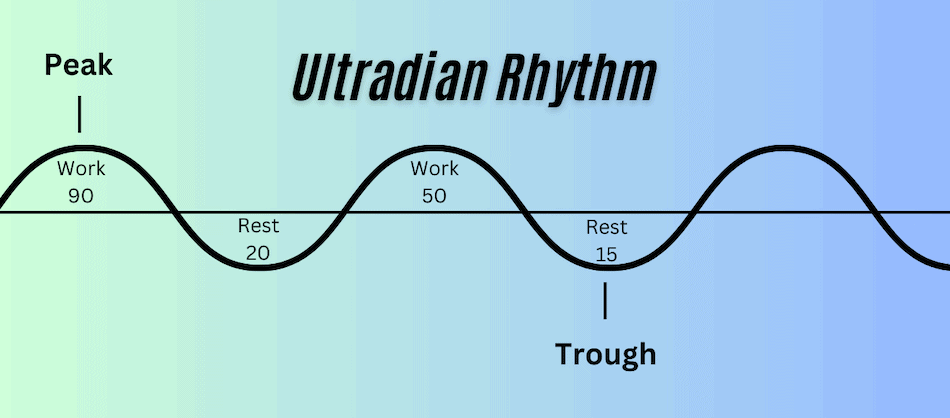
By implementing the Flowtime Technique, you can maintain a flow state and optimize your productivity. Don’t forget to experiment with other time management methods, such as the Ivy Lee Technique or the Kanban method, to find the perfect fit for your working style and preferences.
Identifying When to Take a Break
Taking breaks is essential for maintaining productivity and mental well-being.
But how do you know when it’s the right time to take a break? Let’s explore some key factors to consider when determining when to pause your work.

Signals From the Brain
Our brains send us subtle cues when we need to rest. These signals can include feelings of mental fatigue, difficulty concentrating, or a decrease in motivation.
Pay attention to these signs and listen to your brain when it tells you it’s time to step away from work for a short while.
Importance of Listening to Your Inner Voice
We often ignore our inner voice, pushing ourselves to work longer hours without breaks.
But it’s crucial to acknowledge our needs and take breaks when required. Remember that hustle culture can be toxic, and taking breaks can ultimately improve your productivity, well-being, and prevent the risk of burnout.
Running Out of Ideas
If you find yourself struggling to generate new ideas or feeling stuck on the current task at hand, it may be a sign that your brain needs a break.
Give yourself a chance to recharge and gain fresh perspectives by stepping away from the task for a few minutes.
Mental Fatigue
Prolonged periods of intense focus can lead to mental fatigue, which can reduce the quality of your work. When you notice signs of mental exhaustion, take a break to let your mind recover.
Frustration
Feeling frustrated or overwhelmed is a clear indication that it’s time to take a break. Short breaks can help you reset your emotions and approach the task with a clear mind.
Difficulty Focusing
When you find it challenging to concentrate on your work, it may be time for a break. Struggling to focus can be a sign that your brain needs to rest and recharge.
Increased Distractions
If you notice that you’re becoming increasingly distracted by things unrelated to your work, it’s a signal that you need a break. By taking a short pause, you can regain focus and get back on track.

Task Completion
Completing a task or reaching a milestone is an excellent time to take a break. Reward yourself with some downtime and enjoy the satisfaction of accomplishment before moving on to the next task.
By paying attention to these factors, you can better identify when it’s time to take a break.
Example of the Flowtime Technique in Action
To better understand the Flowtime Technique, let’s consider a specific example: “I’m a copywriter with 3 projects to complete this week.”
This scenario will demonstrate how the technique can be applied and why longer work intervals and break times might be necessary.
Here’s how you might go about it:
Create a Timesheet
Begin by creating a timesheet to track your work sessions and breaks. This will help you monitor your progress and ensure that you’re giving your brain the rest it needs between sessions.
Choose a Task
Select a specific project you want to focus on and break it down into smaller, manageable tasks, such as:
- Carrying out research
- Compiling voice of customer data
- Creating persona profiles
- Outlining the first draft
- Writing the first draft
- Editing
- Wireframing
- Final edits
Begin Work
Start working on the first task you’ve chosen. Remember, no multitasking is allowed during this time. Focus solely on the task at hand to maximize your concentration and productivity.
Work Until You Need a Break
Since research can be mentally demanding, you might find that you need longer work intervals and break times.
For instance, you may work for 50 minutes before taking a 10-minute break. This allows you to maintain a high level of focus while still giving your brain time to rest and recharge.
Remember to write down how long you worked for and how long you intend to take a break, noting any comments like distractions, how energized you were, and how you generally felt.
Adjust Your Schedule as Required
As you progress, pay attention to your energy levels and adjust your work intervals and break times accordingly. You might find that some tasks require longer focus periods, while others can be completed in shorter bursts.
By applying the Flowtime Technique to your study sessions, you can optimize your productivity and retention. Remember to consider your unique needs and energy levels, and don’t hesitate to make adjustments as necessary.
The Flowtime Technique is just one of many time management strategies available to you, so be sure to explore other methods, such as the Seinfeld Strategy or Inbox Zero, to find the best fit for your lifestyle and goals.
Advantages of the Flowtime Technique
The Flowtime Technique offers several benefits that can help you make the most of your work hours and enhance your overall productivity.
Let’s explore the advantages of this time management method in more detail:
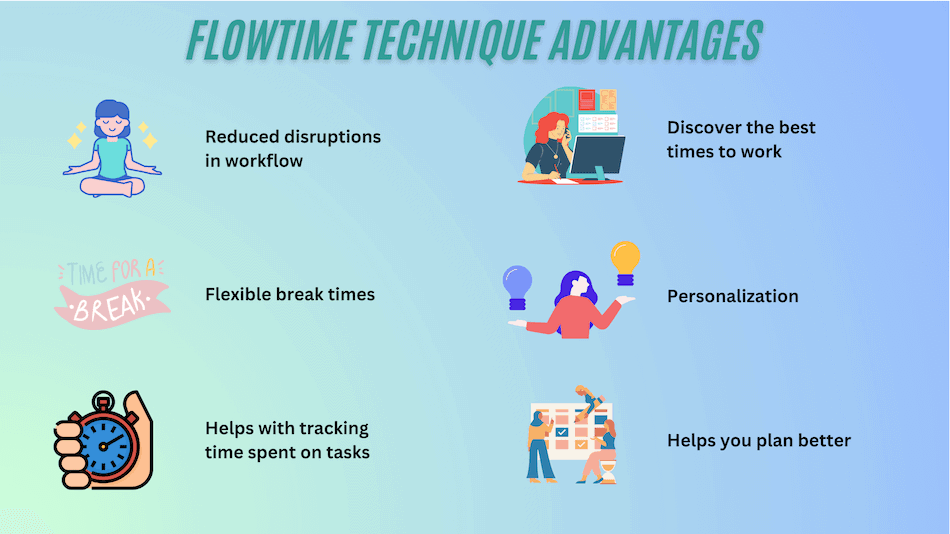
Reduced Disruptions in Workflow
By concentrating on a single task until you feel the need for a break, the Flowtime Technique minimizes interruptions and helps maintain a steady workflow. This uninterrupted focus can lead to improved efficiency and faster completion of tasks.
Flexible Break Times
Unlike other time management techniques that impose fixed break durations, the Flowtime Technique allows you to take breaks when you naturally feel the need.
This flexibility helps prevent burnout and ensures that you’re working in sync with your body’s needs.
Personalization
The Flowtime Technique can be tailored to your unique work style and preferences, making it a versatile and adaptable productivity tool. This personalization allows you to optimize your workflow and achieve your goals more effectively.
Helps With Tracking Time Spent on Tasks
By creating a timesheet to record your work sessions and breaks, you can gain valuable insights into your productivity patterns. This information can help you plan better and make adjustments to your work habits as needed.
This is exceptionally helpful if you are a freelancer as you can see how many hours you’re spending on each project and get a better feel for how to price future projects.
Helps You Plan Better
By understanding your natural work rhythms and adapting your schedule accordingly, the Flowtime Technique empowers you to plan your day more effectively.
This improved planning can help you accomplish more in less time and minimize stress.
Discover the Best Times to Work
The Flowtime Technique can help you identify your biological prime time – the period of the day when you’re naturally most focused and productive. By working during these peak periods, you can maximize your output and make the most of your available time.
Disadvantages of the Flowtime Technique
While the Flowtime Technique offers numerous benefits, it may not be suitable for everyone.
Let’s explore some of the potential drawbacks of this time management method:
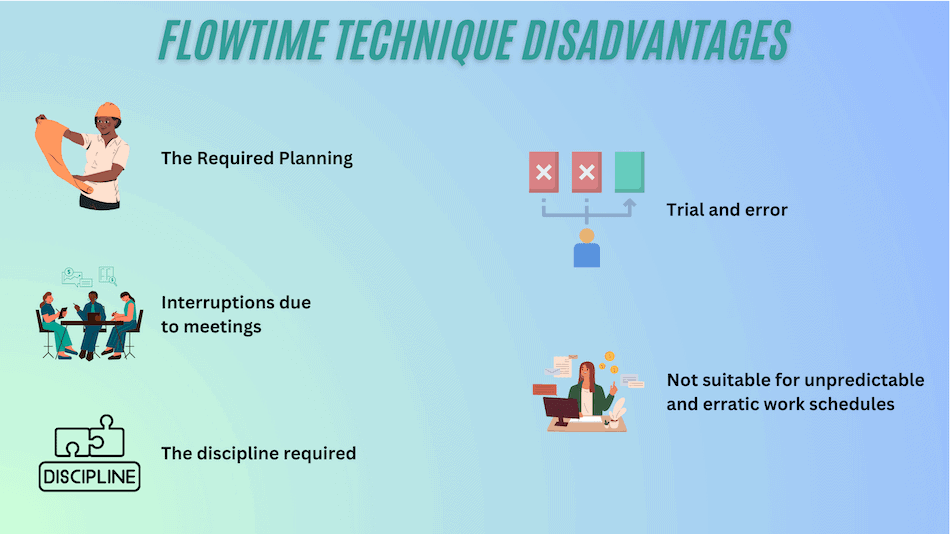
The Required Planning
To effectively implement the Flowtime Technique, you’ll need to plan your tasks in advance and create a timesheet to track your work sessions and breaks. This additional planning may not suit everyone’s preferences or work style.
Interruptions Due to Meetings
For professionals with frequent meetings and appointments, the Flowtime Technique might not be as effective, since these interruptions can disrupt your workflow and make it difficult to maintain focus on a single task.
The Discipline Required
The Flowtime Technique requires a certain level of self-discipline to ensure that you’re working on a single task until you naturally need a break. If you struggle with maintaining focus or are easily distracted, this method may prove challenging.
Trial and Error
Finding the right balance between work sessions and breaks can take some trial and error. It may take time to determine the optimal rhythm that works best for you, which can be frustrating for those looking for immediate results.
Not having a regimented time for breaks, it can be tempting to take longer than needed breaks.
Not Suitable for Unpredictable and Erratic Work Schedules
If your work or study schedule is highly unpredictable, with frequent changes and shifting priorities, the Flowtime Technique might not be the best choice.
This method works best when you have a predictable schedule and can plan your tasks in advance.
While the Flowtime Technique has its advantages, it may not be the perfect solution for everyone. It’s essential to consider your work habits, preferences, and daily schedule before committing to this method.
If you find that the Flowtime Technique isn’t the right fit, don’t worry – there are plenty of other time management techniques available to help you stay productive and achieve your goals.
Tips for Overcoming Challenges and Maximizing the Flowtime Technique
Implementing the Flowtime Technique can come with its fair share of challenges. However, with the right strategies in place, you can overcome these obstacles and maximize the benefits of this time management method.
Here are some practical tips to keep in mind when practicing this technique:
Create a Clear Plan
Before you start using the Flowtime Technique, make sure to plan your tasks and prioritize them accordingly. Having a clear plan will help you stay focused and prevent you from feeling overwhelmed during your work sessions.
Use a Timer
To ensure that you maintain the discipline required for the Flowtime Technique, use a timer to track your work sessions and breaks. This will help you stay on track and make it easier to monitor your progress.
Find a Quiet Workspace
To minimize distractions and enhance your focus, create a dedicated and quiet workspace. This could be a home office, a coworking space, or even a comfortable corner of your home.
Establish Boundaries
If you have frequent meetings or other obligations that may interrupt your workflow, set clear boundaries with your colleagues or clients.
Inform them of your working hours and availability, and politely request that they respect your schedule.
As it’s just the two of us in our home office, we have an unwritten rule that when one of us has their noise-canceling headphones on, we’re attempting to achieve a flow state and do not want to be distracted.
Be Patient and Adaptable
Remember that finding the right balance between work sessions and breaks might take some time.
Be patient with yourself as you learn and adjust your schedule as needed. Don’t hesitate to experiment with different durations for work sessions and breaks to find the perfect rhythm for you.
Embrace Trial and Error
If you find that the Flowtime Technique isn’t working for you, don’t be afraid to try other time management methods. It’s essential to find a system that works best for your unique needs and preferences.
Personally, I found this method to work better than the counterpart technique Pomodoro.
There was never a time that I would complete a task in exactly 25 minutes which meant that I would either finish early and have to task swap for a few minutes or, I would run late and have to disrupt my ‘flow state’ by taking a 5-minute break – often forgetting my train of thought of where I was up to.
Track Your Progress
Keep a record of the time you spend on tasks and the breaks you take using the Flowtime Technique. This will help you better understand your work habits and make necessary adjustments to optimize your productivity.
Celebrate Small Wins
As you make progress using the Flowtime Technique, acknowledge and celebrate your achievements, no matter how small. This will help you stay motivated and encouraged along the way.
By taking these steps, you can overcome the challenges associated with the Flowtime Technique and create a more effective and personalized time management system.
As you experiment and learn, you’ll be able to fine-tune your approach and ultimately increase your productivity and satisfaction in both your professional and personal life.
Flowtime Technique FAQs
A: The Flowtime Technique is a time management method that emphasizes focus and flexibility by using customized work intervals and break times based on your productivity and energy levels.
A: The Flowtime Technique works by tracking the time spent on tasks and adjusting your work intervals and breaks to optimize your productivity and focus.
A: Benefits of the Flowtime Technique include reduced workflow disruptions, enhanced focus, personalized work/break schedules, and better time tracking for tasks.
A: Yes, the Flowtime Technique can help you discover your biological prime time by identifying your most productive and focused hours.
A: To overcome challenges, address potential difficulties, and find practical solutions such as using timers, setting boundaries, and developing self-discipline.
A: Use your timesheets to identify patterns, craft an ideal daily schedule, plan subsequent days, and schedule critical and non-critical tasks accordingly.
A: While the Flowtime Technique can be beneficial for many, it’s essential to experiment with different techniques to find the best fit for your personal needs and preferences.
A: Personalize the Flowtime Technique by adjusting work intervals and break times based on your energy levels, focus, and the complexity of tasks.
A: Consider your personal needs, work style, and the benefits of different techniques, such as focus, flexibility, and adaptability when choosing a time management method.
A: Yes, the Flowtime Technique can improve productivity by promoting focus, adaptability, and personalized work/break schedules tailored to your energy levels and task complexity.



